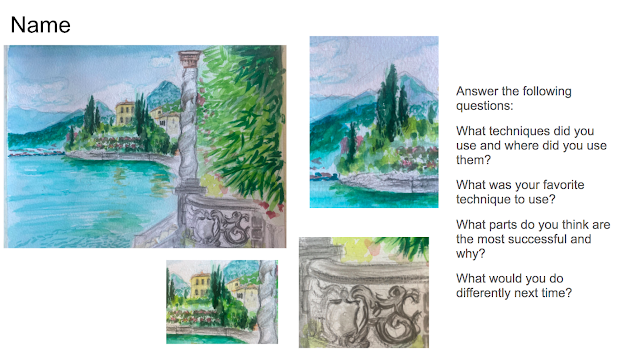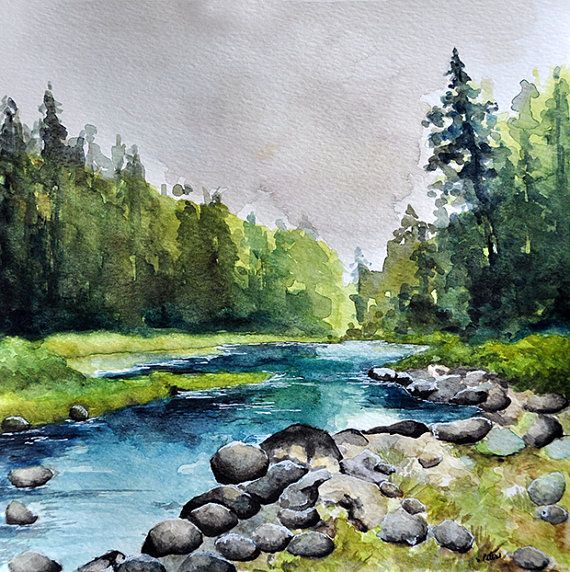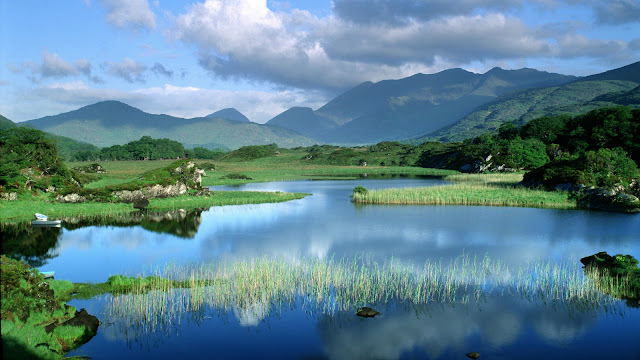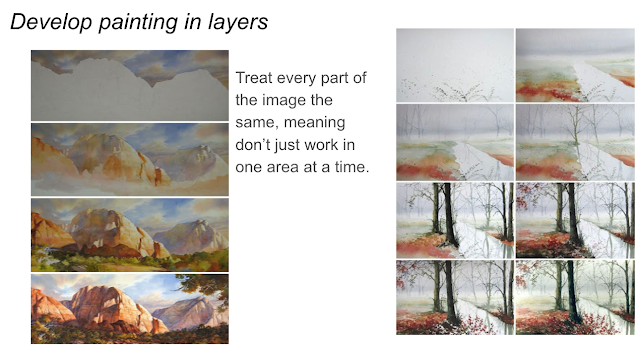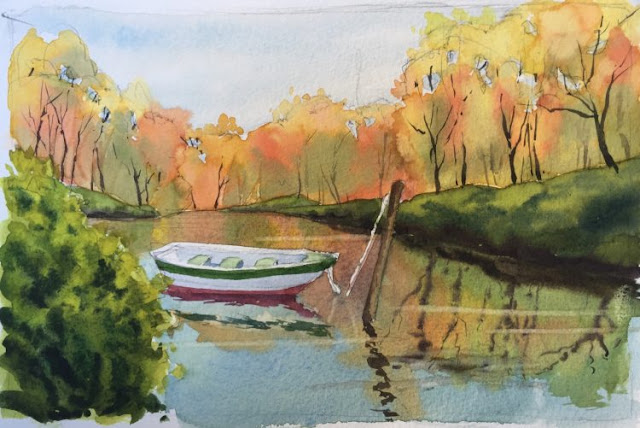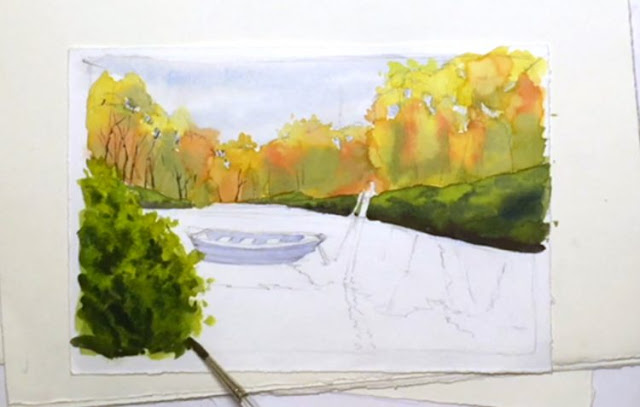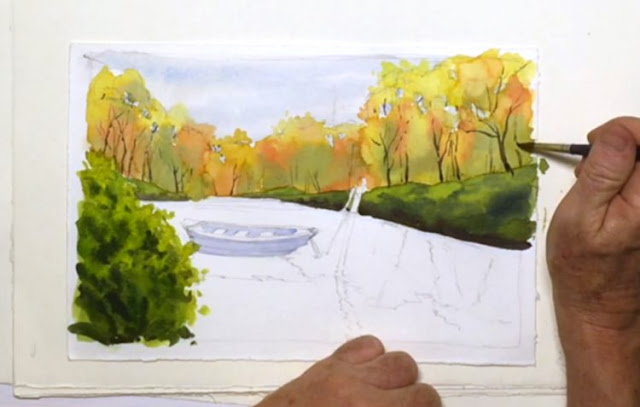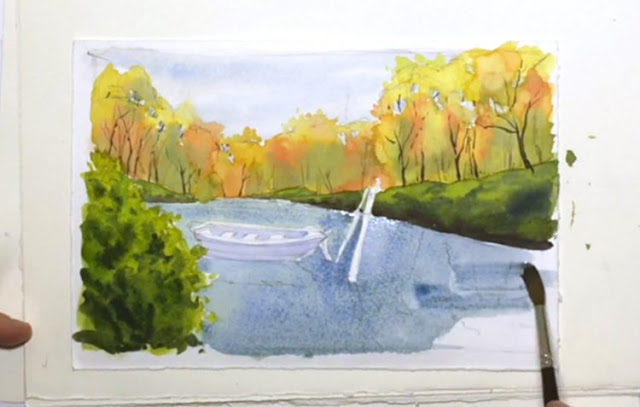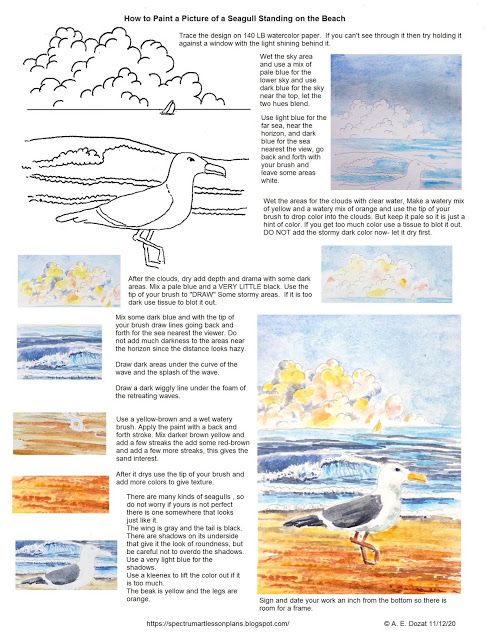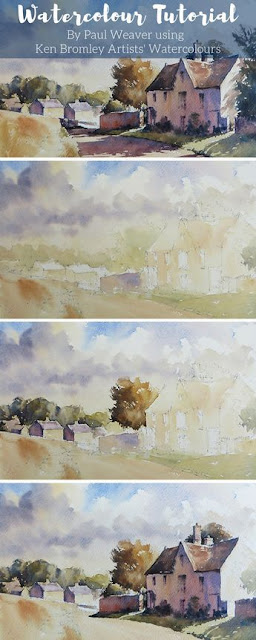Watercolor Landscape Painting
1. The student can use watercolors while filling the entire picture plane.
2. The landscape is clearly drawn with a foreground, middle ground and background. Detail has also been given to item scale with large objects in the front and smaller objects in the back.
3. Watercolors were applied in a neat and creative manner. Colors were evenly and consistently applied (there are no "blotchy" dark or light areas). Washes and neutral colors were used in the background. Brighter colors were used with more detail in the foreground.
4. Watercolor paint was
applied well overall.
A variety of
watercolor
techniques were
used.
5. The student can point to the foreground, middle ground, and background within their painting while also discussing the techniques they used to create those areas.
Google Classrom Assignmnet :
Watercolor Techniques worksheet
Steps:
1. Searching one landscape photos. The place that has a personal meaning to you. You have a great memories or thoughts from the places and you can tell a story /theory about the places. Photos must have shown foreground middle ground and background.
2. Nature element: sky/mountain/ water/ land /rock/trees/ flowers/bushes /reflection/simple manmade objects- boat/ houses...
3. Sketch- classroom assignment Check with Ms. Hsieh
Practice 2 Light pencil sketches on your sketch book before you use the one NICE watercolor paper. Check with Ms. Hsieh.
Lay out the watercolor techniques on your sketches.
Everyone will have ONE watercolor paper.
***Really Light pencil sketch to identify the objects
How to Draw a Landscape using Atmospheric Perspective
Searching similar watercolor references for self-taught knowledge
Student examples
In progress
4. painting step by step
Google Classroom assignment finished painting with tile and big idea - Pick the one you like the most to create a title and the big idea on the slide assignment. Screenshot your slide and turn it in.light pencil sketch
wet paper with clear water
Painting background wash
use paper towel life for the white area on the skyPainting middle ground with a wet on wet technique, brighter colors
dry on dry use the tail of the brush to create texture details - branches /grass
Painting foreground with wet on dry darker colors for the shadow areas
wet on dry( very little water)- branches /tree trunk
wet on dry( very little water)- branches /tree trunk
the second layer- you need to wait for the first layer to dry before you can apply the second layer
using wet on wet on the lake
wet on wet on the large area reflection
the final touch on the detail: highlight with white and shadow with darker color
The final touch on shadow
save the darker colors for the last stage
 What is B/P
What is B/P
Step by Step worksheet
Other objects step by step:
using wet on wet on the lake
wet on wet on the large area reflection
the final touch on the detail: highlight with white and shadow with darker color
The final touch on shadow
save the darker colors for the last stage
Quality of the watercolor landscape painting
More watercolor techniques are used better it gets!
- Enough details to show the watercolor quality
- Many watercolors techniques used
- Great Zoom in objects
- The scale of the objects are clear and large enough to see the detals/ textures clear
- Using many variety of shapes
- Using great color complexity- mixing colors to show different shades from the same color scheme
- showing good quality of textures
- Many layers on the composition
- Has a vanished point
 What is B/P
What is B/P- Not enough details to show the watercolor quality
- Not many watercolors techniques used
- No zoom in objects
- The scale of the objects are too small/ far away
- Not using the variety of shapes
- Not using color complexity
- Not showing textures
- Not enough layers- all lines are the horizontal lines
- Not using any vanish point
